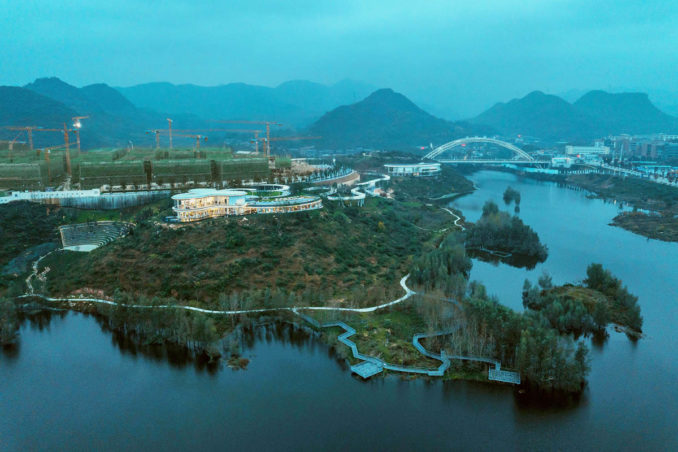
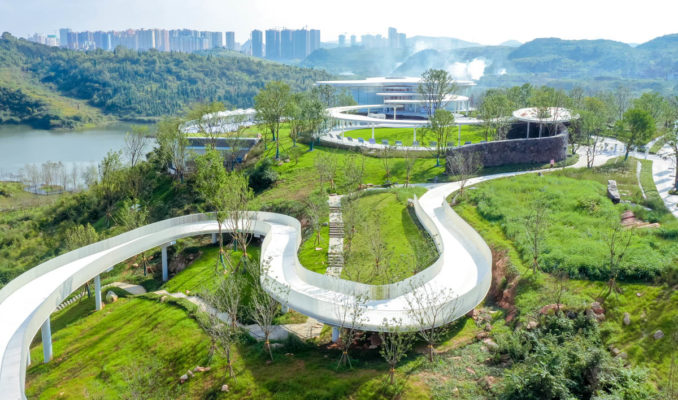
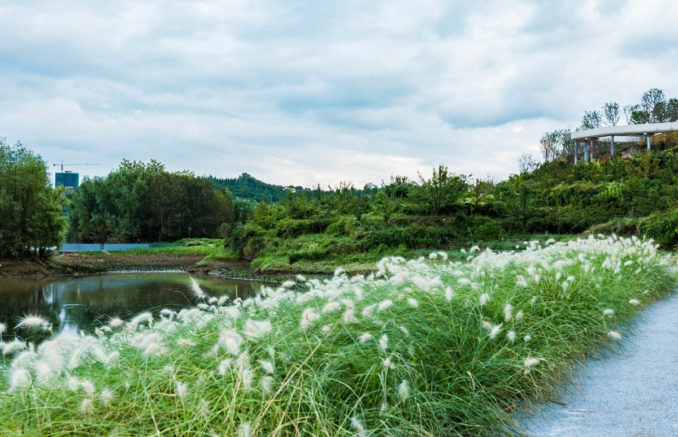
The Community Park provides a novel solution for a new park in Guiyang, China. It respects the existing site and represents the local Karst topography, which is famous for its variant landscapes and complex water system, by reshaping the landform with historical construction methods. The project aims to preserve the original characters of the site and provide diverse leisure moments for the public. This goal is achieved in four directions. First, the resilient sustainable design strategy was used to preserve the possible flooding and changes in the future. Second, minimal design principle was used to reduce the intervention and cost. Third, traditional construction techniques were applied to retain the site memory. Last, a white circular footpath, that undulates the terrain, connects diverse attractions for the public. As a result, this community park combined with the unique local farming culture and natural landscape successfully. It represents the original state of the site with full vitality, highlighting the wilderness beauty of natural elements, and arousing the resonance between man and primitive nature.
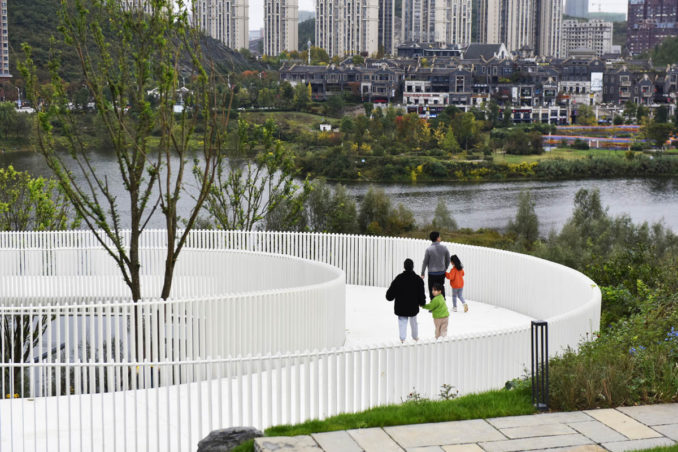
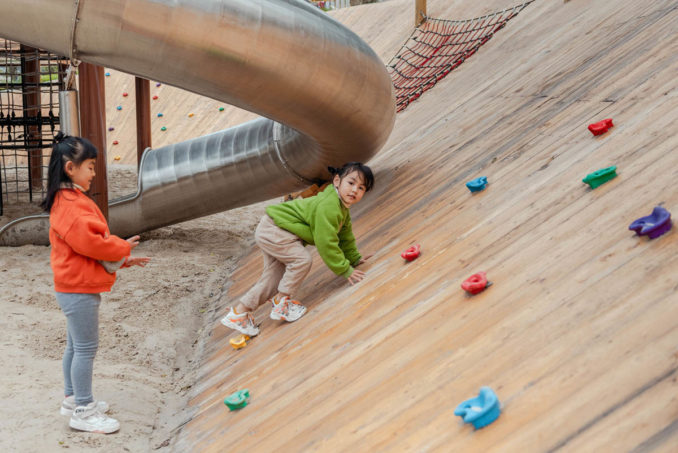
The site is in the new district in Guiyang with a population of 50,000. It sits next to the Laoma River between Red Maple Lake and Baihua Lake, in the Karst Topography on a large scale. Therefore, it is a typical Asian scenery that combines green mountains with rice terraces and blue rivers with Sampan fishing boats. Blackwater buffalos and villagers with yellow conical hats walking slowly on the terraced fields give the whole picture. However, the current hard-paving public space doesn’t fit the historical scenery nor residents’ needs. Therefore, the goal of this project is to emphasize the natural landscape elements, provide attractions for the residents, and meanwhile to promote the intimate connection between humans and nature.
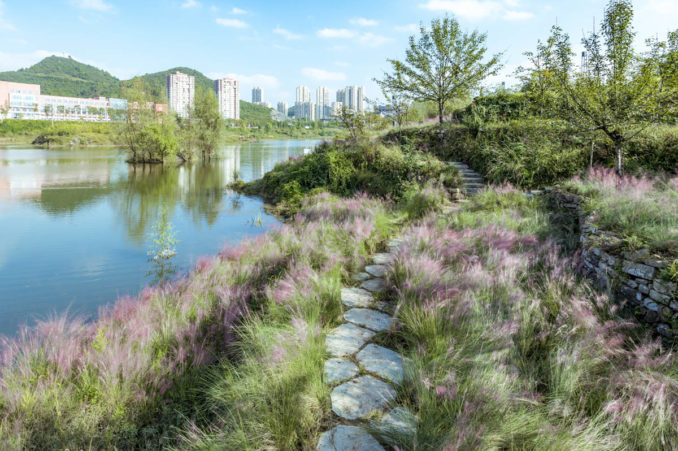
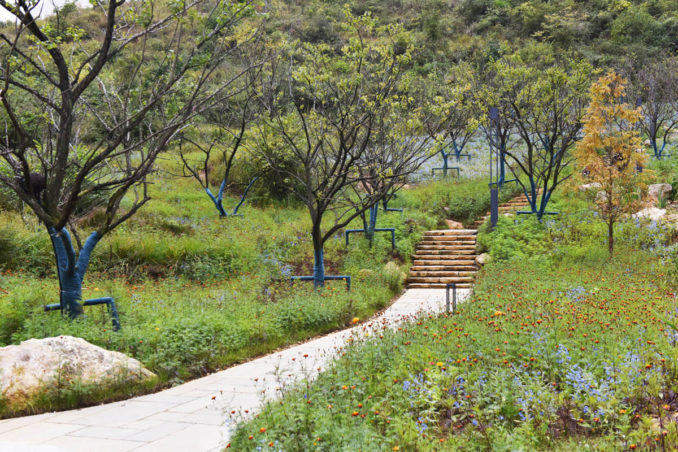
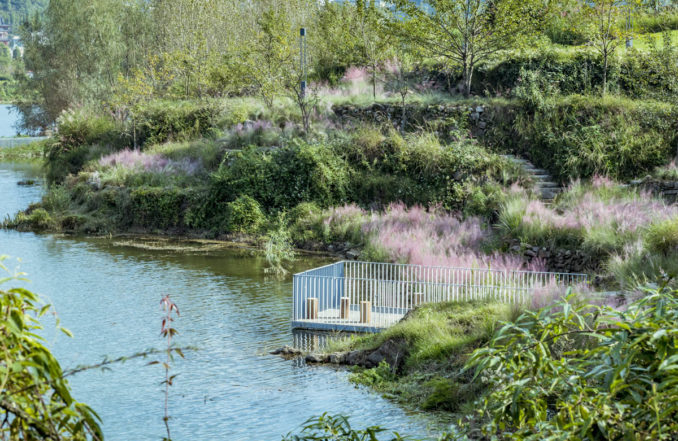
The Karst Topography has a variety of large- and small-scale landscape features, which introduces the following requirements in our design. First, the height difference is up to 45 meters. Second, the site lies within the 5-meter flooding zone and it is influenced by seasonal floods. Third, the local vegetation species are relatively limited, and the site is suffering from severe soil erosion problems. To address these requirements, our strategy focuses on less intervention and lower-cost by integrating the site resources.
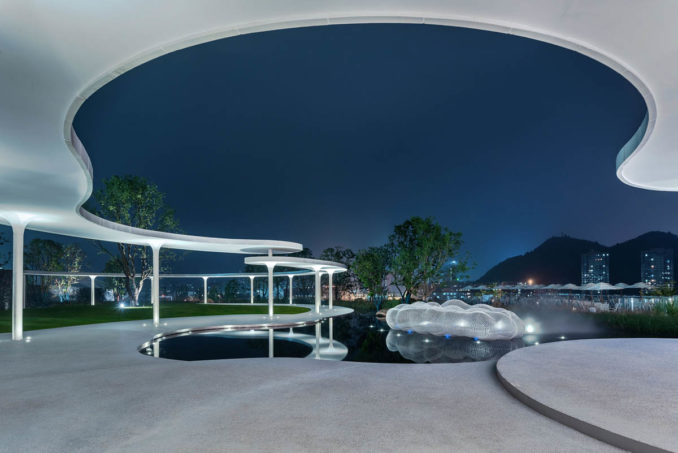
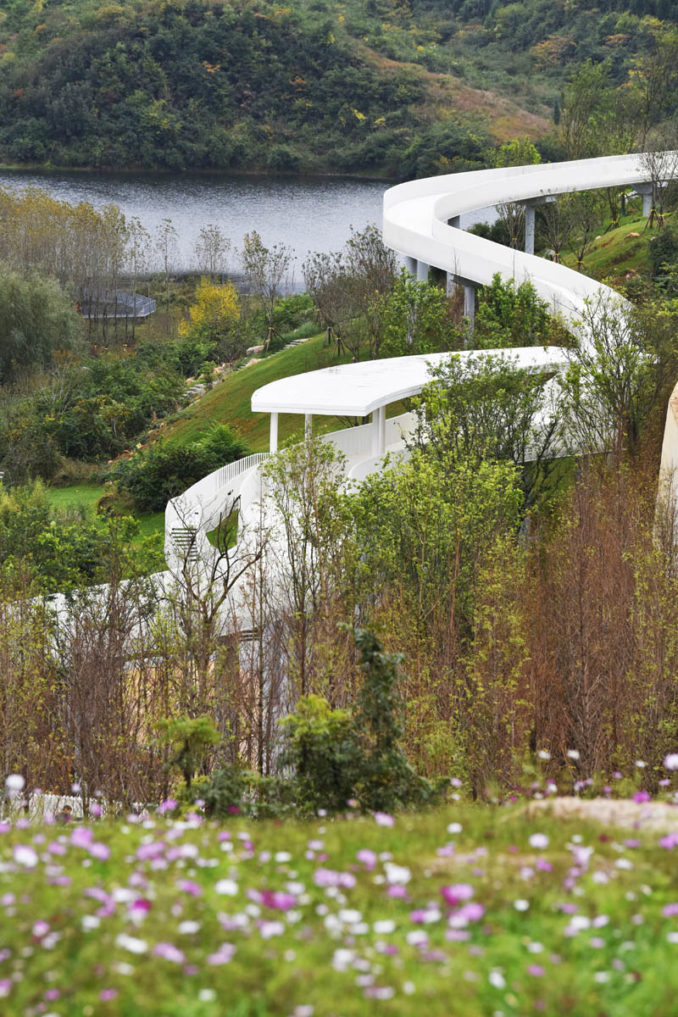
Reshaping Karst Topography with Farming Culture: A New Community Park Design in Guiyang
Location: Longfeng Road, Qingzhen, Guiyang, China
Landscape Architect: Guangzhou S.P.I Design Co., LTD
Lead Designers: Duanlian Nie
Design Team: Ya Xiao, Junjun Deng, Shu Chen, Liancheng Gao, Kun Shi, Yang Lei, Yuting Pan, Yuqin Liang
Architecture Team: Zhongshe Engineering Consulting (Chongqing) Co., Ltd
Client: China Railway Real Estate Group Guizhou Co. Ltd
Photo credit: Jian Zhang, S.P.I Landscape Group
